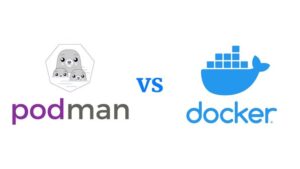MySQL is the most popular free software RDBMS out there and is used by large websites to maintain data in a database for easier and faster manipulation This post aims to answer all queries of a beginner who has just started with MySQL.
This is a guest post by Brianne Walter. Brianne is a blogger by profession. She loves writing, travelling and reading books. She contributes to Dr Hugh Hetherington. Check here for more on Dr Hugh Hetherington. If you want to write a guest post, please check this page.
Introduction
Database is the real backbone for any software or app that is getting developed. MySQL is the open source relational database system coming with reliable features. One can develop a fantastic application using MySQL. Its advantages are more and worldwide applications are getting developed enormously. With PHP, its partnership is well proven. Let us see the most important tip that every beginner should have in mind.
Features of MySQL
- Relational Database System
MySQL is the well proven relational database system by satisfying the laws. Primary key, Foreign key, Null values, Entity relationships are well proven and it is the packaged RDBMS system.
- Client/Server Architecture
MySQL is the database server satisfying the needs of may application clients. It acts as the hub of information for many client programs. Clients can be global in the sense that there will not be limitation in the usage of accessing MySQL.
- SQL compatibility
SQL is nothing but structured query language. In the name itself, MySQL has this feature meaning that it adheres to the standards of SQL, ie querying and updating data. Parent child relationship, well proven entity relationship can be well-formed and hence applications that use MySQL benefit with the good administration of database. Additionally it is having compatibility with IBM DB/2 and Oracle.
- Subselects
Latest versions starting from version 4.1, MySQL has subselects. That is one can retrieve the data in the form of select * from table1 WHERE x IN (SELECT y FROM table2). Because of this facility a database can hold n number of tables and with numerous subselects, retrieval of data is easier.
- Views
In order to get the display of data from multiple tables, without affecting the retrieval time, database supports view feature. From version 5.0 onwards, MySQL supports this. View functionality helps a lot in report, inventory applications. Instead of writing separate queries each and every time, views are just used with select statement that decreases a lot of time in querying the data.
- Stored procedures
From version 5.0 onwards, Stored procedures are available in MySQL. Stored procedures are nothing but set of statements containing insert/delete/update as a batch. Whenever there is a requirement of using the multiple operation, user can depend upon stored procedures directly and hence there will not be direct hit on tables. By having stored procedures, MySQL is well proven for large database projects.
- Triggers
Triggers are in some way related to stored procedure but the difference is for calling a stored procedure user need to call it explicitly, but triggers automatically get executed. Depends upon the way triggers created, triggers can be executed by itself before or after insertion or deletion or update of database. By having triggers, users no need to worry to call the procedures and automatically the database operations are taken care by means of triggers. From version 5.0 onwards, triggers are supported in MySQL.
- Unicode
MySQL starting from version 4.1 supporting Latin-1, Latin-2, and Unicode in the form of UTF8 or UCS2.
- User interface
Toad and many other user interfaces are available and they help in the administration of MySQL server easier. Writing stored procedures, triggers and queries are easier through user interface.
- Full-text search
By the name itself it is known that within a text field, this functionality is playing an important role in searching and hence this is equivalent to a good search function.
- Replication
In a larger database system, effective usage is more and in the same way there are possibilities of loss of data. Replication is available in MySQL to overcome the problem. Protection of the system and to improve load balancing, replication feature is helpful. By means of replication, query execution is speeder.
- Transactions
Transactions are the one which can be accommodated inside the database system for convenience. Failure possibility will be there and it can be system related or user related. If the program is made to work as transaction, there are less possibilities of loss of data. Accidental loss of data or additional store of data can be avoided by using transactions. MySQL supports multiple varieties of formats of storing tables. In that transaction is supported for InnoDB format only. User need to use this format to use transaction.
- Foreign key constraints
Parent child relationship can be easily achieved by using MySQL. Foreign key constraints can be strongly placed in InnoDB kind of tables.
- Platform independence
Software will be said to be portable or universal if it satisfies platform neutral concept. In that way, MySQL is adaptable for AIX, BSDI, FreeBSD etc., Popularity is more because of this unique nature.
Conclusion
MySQL is well suited for geographic information systems, programming languages like C, C++, Java, Perl etc.; Speed is also more in the open source database system. By means of above said excellent features, MySQL tops the world.




